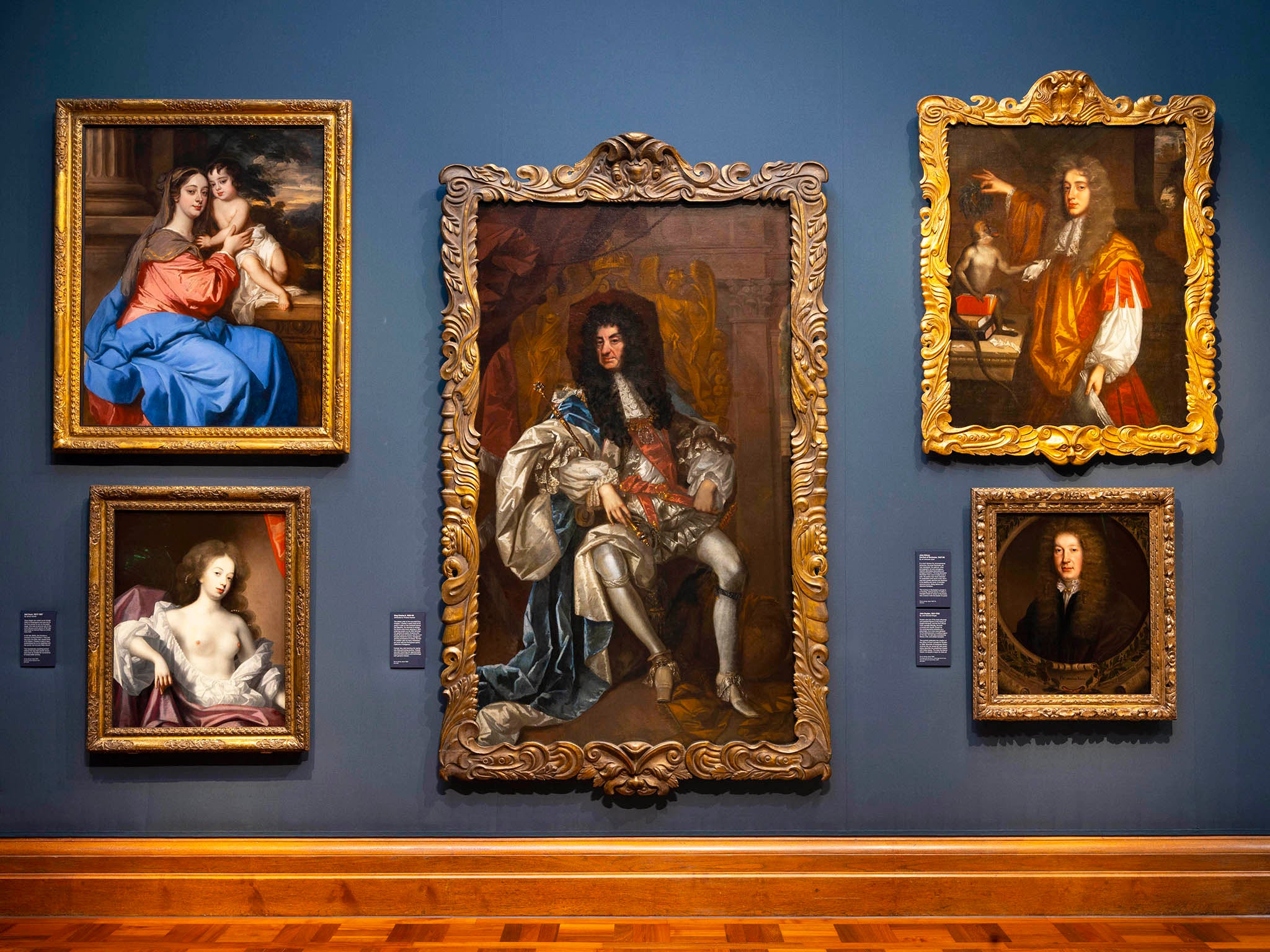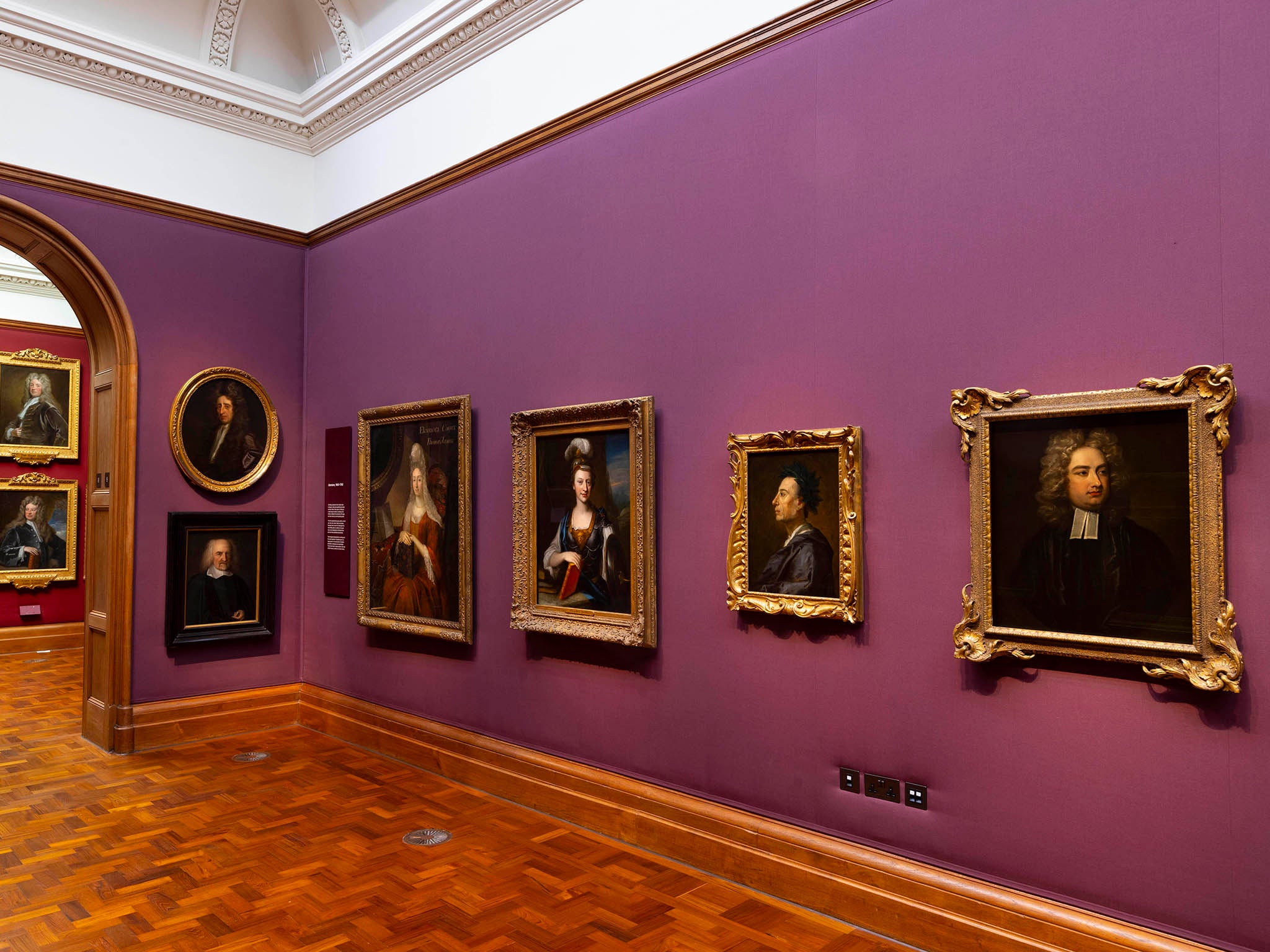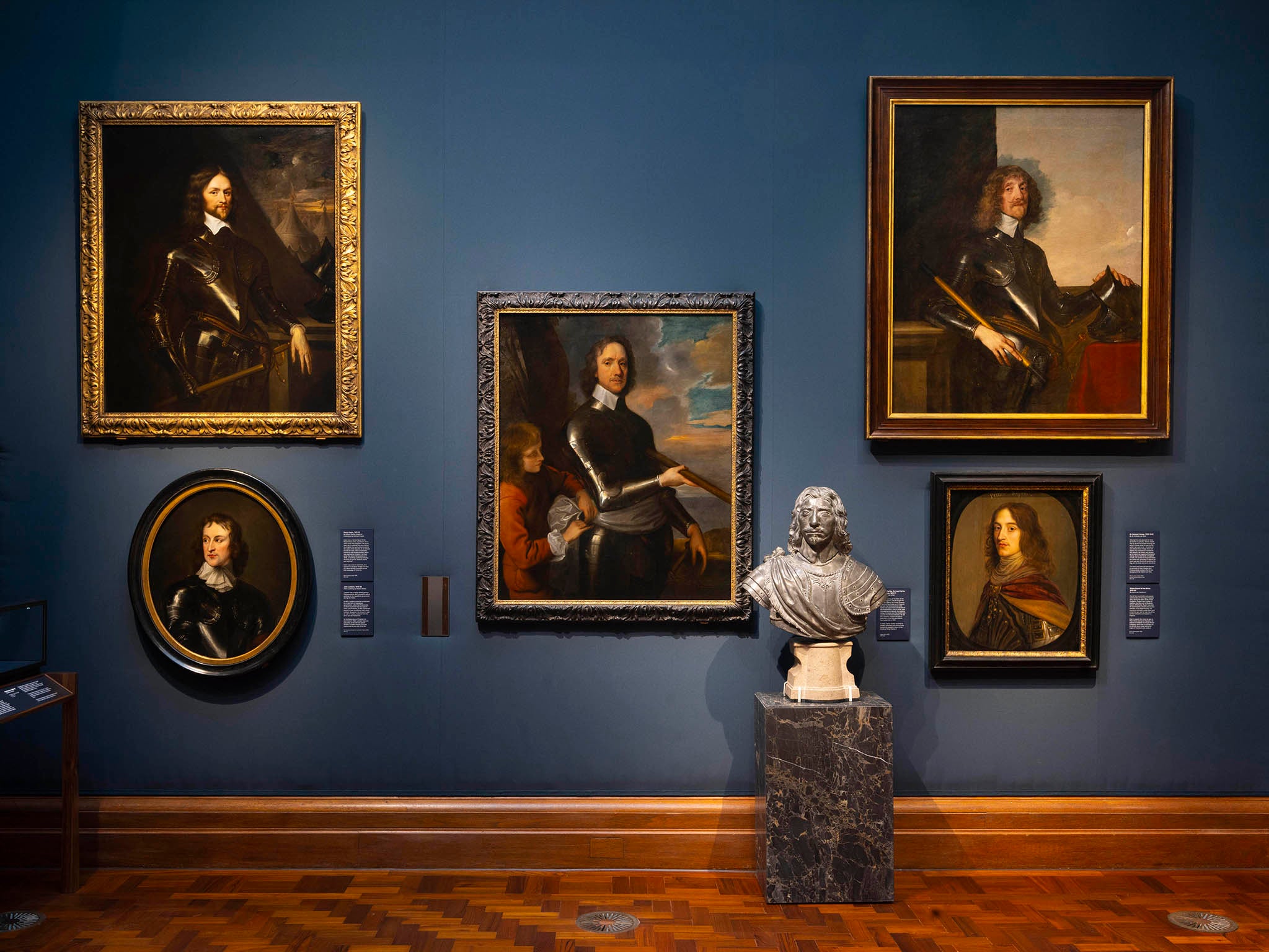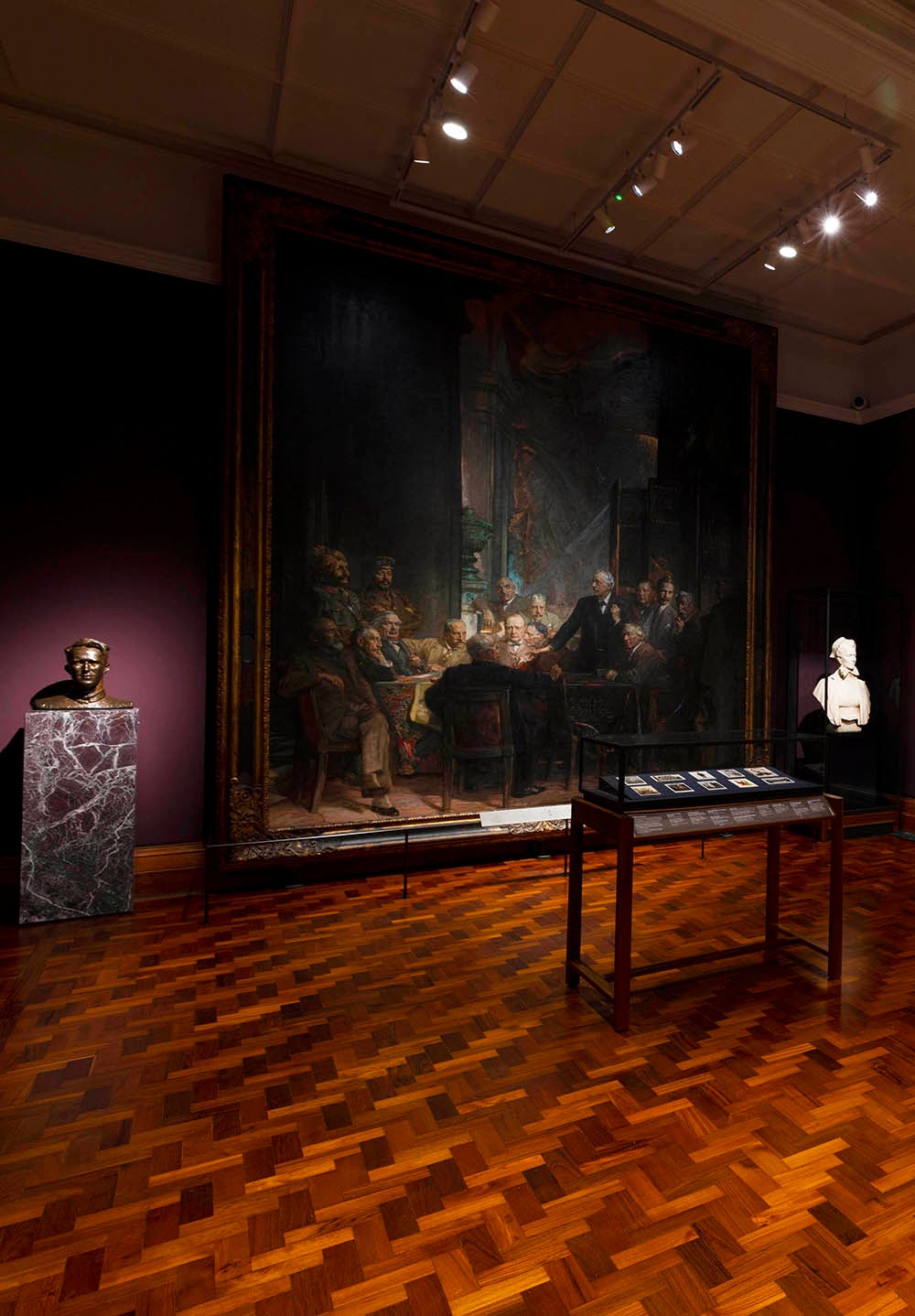Stunning £44m revamp of the National Portrait Gallery makes it feel like a whole new museum
After three years and a £44m redevelopment, the NPG is about to reopen its doors. The Independent’s Mark Hudson is one of the first journalists to get a glimpse

This refurbishment isn’t about extending the building or grafting something new onto something old,” says Nicholas Cullinan, the National Portrait Gallery’s director. “It’s a complete transformation of every square inch of a building that hasn’t been considered as a whole since it was opened in 1896.”
Britain’s national gallery of portraiture, built to house images of the country’s most famous and historically important citizens from the Middle Ages to the present day, has been the subject of a £44m refit that began in 2020. On Thursday, it reopens its doors to the public.
“We’ve taken out old shutters to let in light,” says Cullinan, gazing with delight at one of the bright new spaces that will open to the public on 22 June. “We’re taking back galleries that were leased to our neighbour the National Gallery 20 years ago, and we’re opening up the skylights.
“The original architect of the building was a genius with light,” says Cullinan. “It was lit entirely with natural light when it first opened. But over the decades it’s become quite claustrophobic, a bit Tardis-like and cut off from its surroundings. But now you can see the trees outside. You understand you’re in the middle of London, and you feel really connected to the city.” The displays filling the new galleries will be in a process of “continual change”, Cullinan says, to give a “much richer, livelier account of history and the way artistic mediums change”.
Walking through the airy and spacious new galleries created in the three-year refurbishment, I can’t help but agree. It feels like we’re getting not just a classy revamping of a hallowed institution, but an entirely new museum. There are still plenty of men in wigs, Victorian statesmen and First World War generals, but the tone of the displays feels lighter, more conversational than before. I never thought looking at gigantic Victorian paintings of momentous sittings of the House of Commons could be this much fun.
The National Portrait Gallery was created in 1856, as what Cullinan describes as a “gallery of evidence”: images of great individuals who might serve as examples to the rest of society. The first gallery in the world devoted entirely to portraiture, the NPG has built up the world’s largest collection of portraits, as well as one of the world’s genuinely great photographic collections.
Over recent decades, the NPG has made huge leaps in modernising its image, promoting itself as a showcase of a colourful, diverse, socially progressive modern Britain, while mounting world-class exhibitions on great artists such as Cézanne, Picasso and David Hockney. Yet it has struggled to entirely shrug off its image as a Victorian temple of worthies. The marvellous augustness of the name – the National Portrait Gallery, for goodness’ sake! – makes you feel you should be standing to attention. It’s hard to make it feel informal.
Indeed, when architect Jamie Fobert took a long, hard look at the building prior to planning the refurbishment, the comparison that sprang to mind was with an old fashioned gentlemen’s club, the sort of centuries-old institution that dots the streets around nearby St James’s and Mayfair – and not in a good way. Clubs such as Brooks’s, White’s and the Athenaeum were designed to provide relaxation and comfort for the great and the good, while keeping the rest of the world – the likes of you and me – very much at bay.

Despite the colourful posters that have fronted the gallery in recent years, the NPG’s massively solid front doors and tall iron railings exuded an appearance of forbidding impregnability.
That impression is utterly dispelled by the gallery’s new entrance onto Irving Street, next to Charing Cross Road. It opens up the previously ignored side elevation, with three large doorways and a set of steps projecting out onto the pavement. The NPG now feels like it’s truly facing and welcoming the world. Inside, the former cubby-hole-like entrance lobby is replaced by a light and spacious foyer, with a striking selection of busts of figures as diverse as Nelson Mandela, sculptor Jacob Epstein, and the one-time West End superstar Sybil Thorndike.
In some ways our remit remains the same as when we were founded. The idea was to create a gallery of great individuals for people to admire, but also to admit people with great talents, who may be far from perfect in their behaviour
I’ll never forget my first visit to the NPG as a teenager, more decades ago than I’m going to let on here, at a time when the once fusty gallery’s image and atmosphere had been shaken up by Roy Strong, that great Swinging Sixties fogey-curator – think Che Guevara meets Alan Bennett – who took over as director in 1967.
Images of living people were permitted for the first time in 1969, along with works in mediums other than oil paint – including photography. Yet the place still had the ambience of a Victorian Valhalla, with a quasi-Narnian sense of walking through a gilded British past defined by the kind of people who hung out in those gentlemen’s clubs, with not too many women – and just about nobody of colour. Then, right at the end was a room full of big glossy David Bailey photographs of The Beatles, Michael Caine, Jean Shrimpton and Mick Jagger. These images were already a good decade old, but the impression was of brash, spine-tingling nowness.
That historical order will be reversed in the new NPG.
“You’ll enter and see some of the people you’ve seen and heard on the news that morning. You then do a complete chronological and spatial loop, as you go upstairs, all the way back to the Middle Ages, and the Plantagenets” – the royal house, of French origin, that ruled Britain from 1154 to 1485 – “and you work your way back through to the present,” Cullinan says.
The examples of the sort of contemporary “history makers” we all feel we know include Marcus Rashford; Grayson Perry and family snapped by Martin Parr; Stormzy; Andy Murray painted by Maggi Hambling; and, of course, the King.
When I quiz Cullinan on which of the portraits he’s proudest of getting into the new NPG, he pauses, as though he hasn’t considered the matter before. “I like Peter Blake’s portrait of Michael Eavis, founder of the Glastonbury Festival,” he says, almost hesitantly. “I like the portrait of Zadie Smith by the British-Nigerian artist Toyin Ojih Odutola. And I really like the self-portrait by the Tanzanian-Swedish-British painter Everlyn Nicodemus, which is a real discovery.”
If Cullinan sounds circumspect, it’s because, as a seasoned museum professional who served at Tate Modern and New York’s Met Museum before taking over the NPG in 2015, he’s playing a long game in deciding whose images deserve preserving at public expense, rather than hoovering up every minor celebrity and hoping for the best.
“In some ways our remit remains the same as when we were founded,” Cullinan says. “The idea was to create a gallery of great individuals for people to admire, but also to admit people with great talents, who may be far from perfect in their behaviour.
“Henry VIII is problematic, but he’s an extraordinary historical character who had a huge impact on British society. So I don’t think any of us would say that he shouldn’t be shown.” And the fact that he’s represented by an artistic masterpiece by the Renaissance master Holbein is surely key.

“We’re here to make a collection representative of Britain, that serves the whole of society. But it’s not just about ticking demographic boxes. The quality of the collection as art is all-important. If you look at the incredible Joshua Reynolds Portrait of Omai [recently jointly acquired by the NPG and the Getty Museum in Los Angeles for £50m], it’s not only a hugely important image of a non-white person in 18th-century Britain, it’s just one of the best pieces of British art.”
Omai, a Polynesian visitor from the island of Raiatea, travelled to England aboard one of the ships from explorer James Cook’s second Pacific voyage of discovery; he was feted by London society upon his arrival in 1774. The inclusion of his portrait in pride of place, at the head of a huge gallery devoted to the 18th century – the great age of English portraiture – is an example of the new NPG’s recontextualisation of Britain’s imperial past.
Rather than rewrite history, the new displays have the frankness and sensitivity to note that the Indian Rebellion of 1857, long known as the Indian Mutiny and seen as one of the most heroic stands of the British army, was first and foremost an example of “Indian Resistance”. An imaginary scene of Queen Victoria presenting a mythical African king with a bible is displayed beside a Nigerian carving of Victoria that portrays her features in traditional Yoruba style.
Moving closer to date, the Post-War 20th Century gallery centres on Pietro Annigoni’s iconic coronation portrait of the late Queen. Beyond it, the huge wall above the escalators is filled with projected images from the collection; at the moment of my visit, it happens to be showing David Bowie from the cover of Aladdin Sane. A few feet away, among many images of illustrious late-20th-century Britons, is a portrait of the controversial miners’ leader Arthur Scargill; another depicts the conceptual artists Gilbert and George stark naked. Far from feeling like a debunking of our ancestral institutions, there’s an exciting sense of being inside history as it was actually lived.
The last couple of decades have, of course, seen the most momentous upheaval in portraiture since the invention of the form in the 15th century. Where 50 years ago, the majority of people might have been photographed only a handful of times in their entire life, now phone-cameras and social media have made once arcane issues of self-projection and identity manipulation simply part of the fabric of everyday life.
How can an institution devoted to the immortalisation of “great individuals” – be they Mr Gladstone or Johnny Rotten – respond to the ultimate democratisation of the portrait? “The everyday portrait is a very interesting phenomenon, and it’s not new,” says Cullinan. “If you look back through our galleries, you can clearly see how it develops from miniature paintings which were often love tokens worn on the body. As we continue collecting more popular, vernacular forms of portraiture, like church carvings, death masks and satirical prints, we’re starting to understand the diverse ways people have used portraits that go far beyond hanging them on walls.”

Examples of this, in a wonderful little display plonked, for some reason, in the 17th-century galleries, include a Bob Marley album cover, a teenager’s backpack with a paperback copy of Wuthering Heights, featuring Emily Brontë’s portrait, falling out of it, and Spitting Image dog-chew toys of Margaret Thatcher and former Labour leader Neil Kinnock.
The new NPG’s exhibition programme builds on its recent tradition of major shows on women artists – including Cindy Sherman and Tacita Dean – with a show on Yevonde, an interwar pioneer of colour photography. Born Yevonde Philone Cumbers in Streatham, the supremely stylish snapper combined old-school glamour with touches of modernism in truly hallucinatory colour.
But the main draw of the gallery’s reopening will undoubtedly be Paul McCartney Photographs 1963-1964: Eyes of the Storm, drawn from a cache of nearly a thousand photographs taken by the former Beatle at the height of Beatlemania and discovered in his personal archive in 2020.
And while we’re in the Sixties, what about that great era-defining concept, Andy Warhol’s notion that everyone will eventually be famous for 15 minutes? How can the NPG help to advance that ideal? Just as I’m imagining giant screens flashing the faces of you, me and everyone else into the gallery’s foyer, Cullinan brings me gently back to earth.
“There have always been people who’ve been briefly famous,” he says. “But we tend not to document them, because then we’d be stuck with a lot of pictures that no one understood or cared about, which really wouldn’t work.”
The National Portrait Gallery reopens on 22 June






Join our commenting forum
Join thought-provoking conversations, follow other Independent readers and see their replies
1Comments